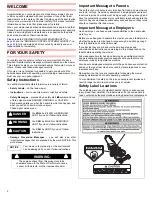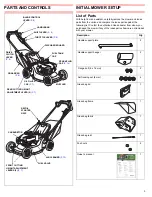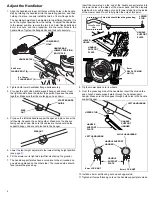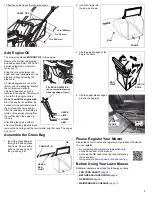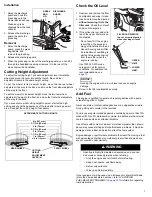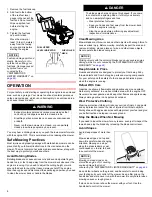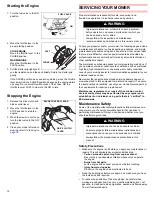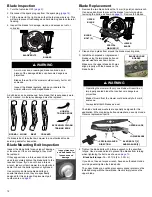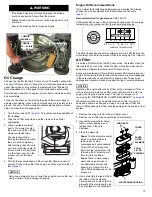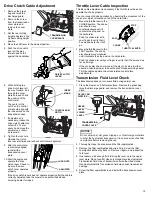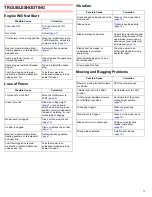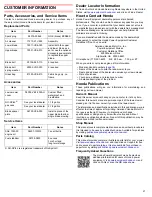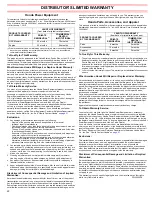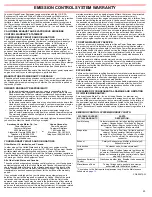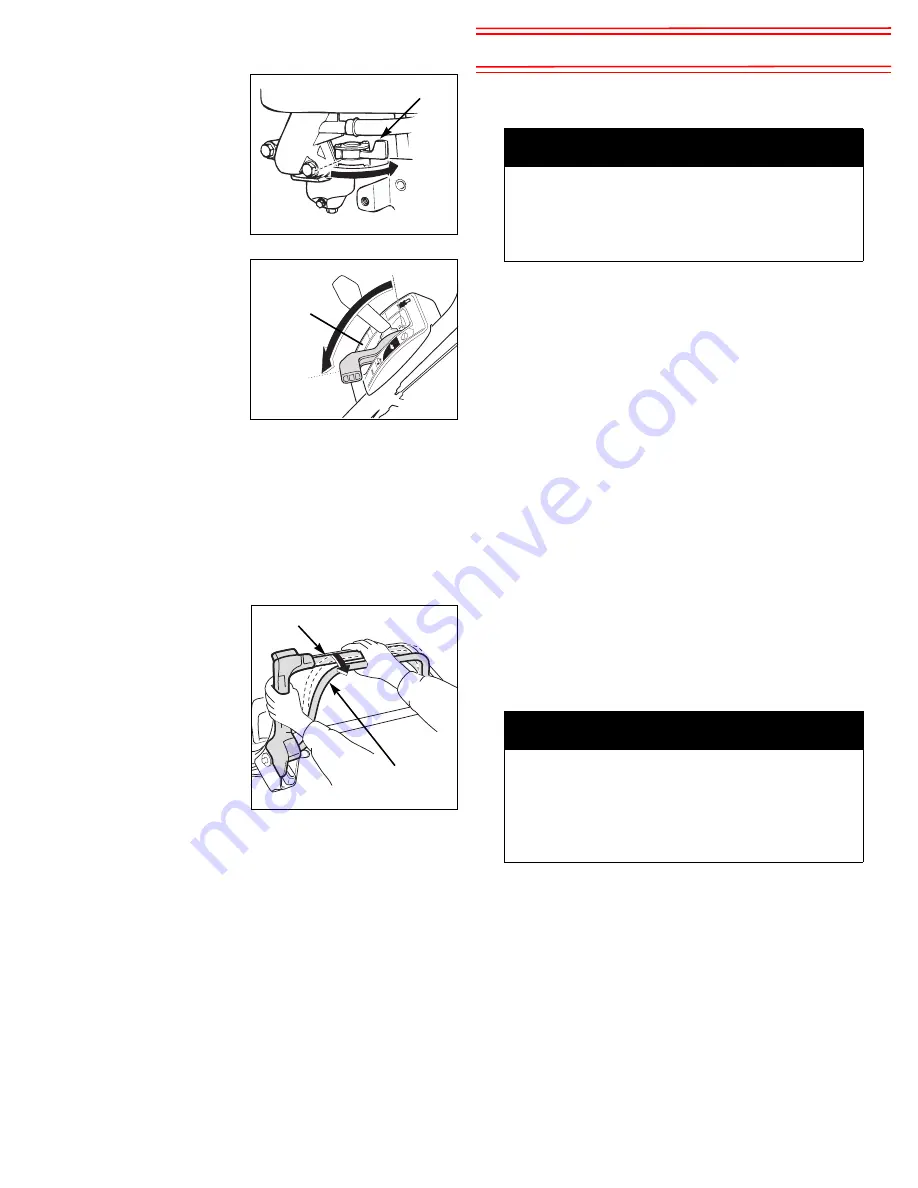
10
Starting the Engine
1. Turn the fuel valve to the ON
position.
2. Move the throttle lever to the
proper starting position.
COLD ENGINE
:
Move the throttle lever to the
CHOKE position.
WARM ENGINE
:
Move the throttle lever to the
FAST position.
3. Pull the starter grip lightly until
you feel resistance, and then pull briskly. Return the starter grip
gently.
If the CHOKE position was used during starting, move the throttle
lever away from the CHOKE position as soon as the engine warms
up enough to run smoothly without use of the choke. Set the
throttle lever at FAST to mow or at SLOW to idle.
Stopping the Engine
1. Release the drive clutch and
blade control lever.
2. Move the throttle lever to the
STOP position to stop the
engine.
3. When the mower is not in use,
turn the fuel valve to the OFF
position.
4. Clean your mower after each
mowing; refer to
.
SERVICING YOUR MOWER
Proper maintenance is essential for safe, economical, and
trouble-free operation. It also helps reduce air pollution.
To help you properly care for your mower, the following pages include
a maintenance schedule, routine inspection procedures, and simple
maintenance procedures using basic hand tools. Other service tasks
that are more difficult or require special tools are best handled by
professionals and are normally performed by a Honda technician or
other qualified mechanic.
The maintenance schedule applies to normal operating conditions. If
you operate your mower under severe conditions, such as sustained
high load, high temperature, or unusually wet or dusty conditions,
consult your servicing dealer for recommendations applicable to your
individual needs and use.
Remember that an authorized Honda servicing dealer knows your
mower best and is fully equipped to maintain and repair it. To ensure
the best quality and reliability, use only new, Honda Genuine parts or
their equivalents for repair and replacement.
Maintenance, replacement, or repair of the emission control
devices and systems may be performed by any engine repair
establishment or individual, using parts that are “certified” to
EPA standards
.
Maintenance Safety
Some of the most important safety precautions follow. However, we
cannot warn you of every conceivable hazard that can arise in
performing maintenance. Only you can decide whether or not you
should perform a given task.
Safety Precautions
• Make sure the engine is off before you begin any maintenance or
repairs. This will eliminate several potential hazards:
–
Carbon monoxide poisoning from engine exhaust.
Be sure there is adequate ventilation whenever you operate
the engine.
–
Burns from hot parts.
Let the engine and exhaust system cool before touching.
–
Injury from moving parts.
Do not run the engine unless instructed to do so.
• Read the instructions before you begin, and make sure you have
the tools and skills required.
• To reduce the possibility of fire or explosion, be careful when
working around gasoline. Use only a nonflammable solvent, not
gasoline, to clean parts. Keep cigarettes, sparks, and flames away
from all fuel-related parts.
ON
FUEL VALVE
Throttle
FAST
CHOKE
DRIVE CLUTCH
LEVER
BLADE CONTROL LEVER
WARNING
Improper maintenance, or failure to correct a problem
before operation, can cause a malfunction in which you
can be seriously hurt or killed.
Always follow the inspection and maintenance
recommendations and schedules in this owner’s manual.
WARNING
Improper maintenance can cause an unsafe condition.
Failure to properly follow maintenance instructions and
precautions can cause you to be seriously hurt or killed.
Always follow the procedures and precautions in this
manual.


